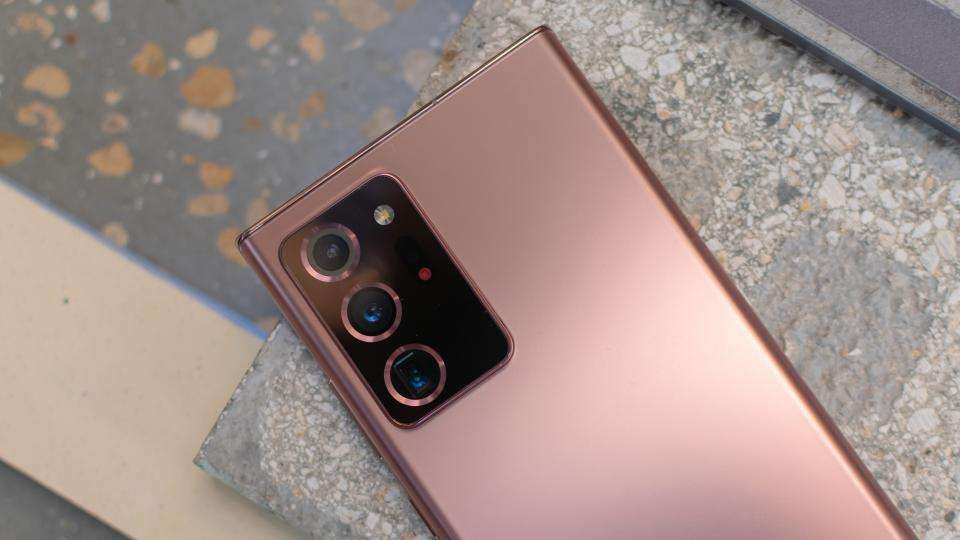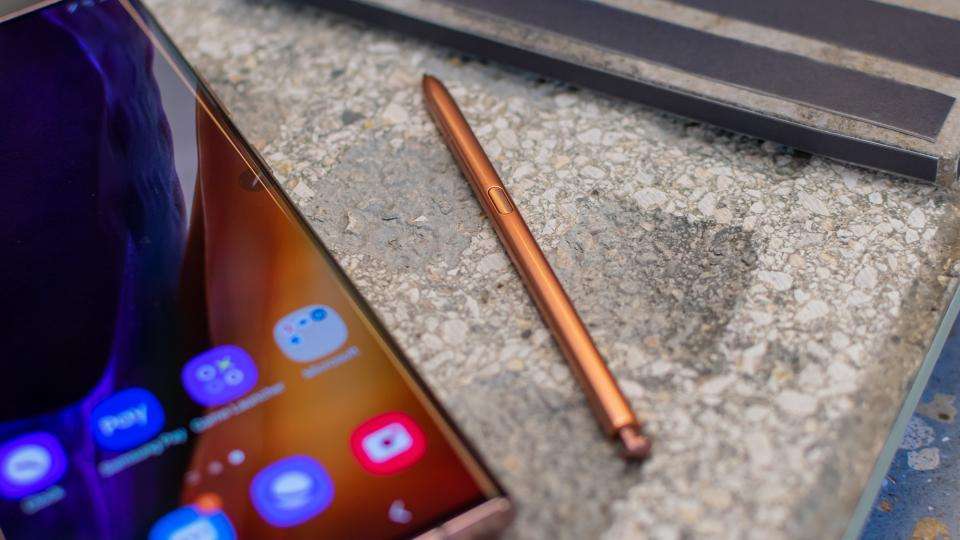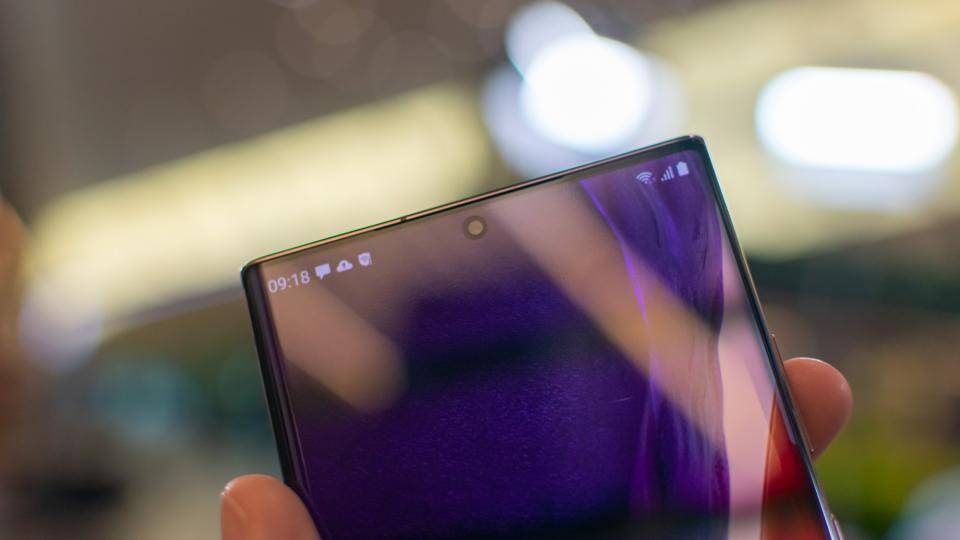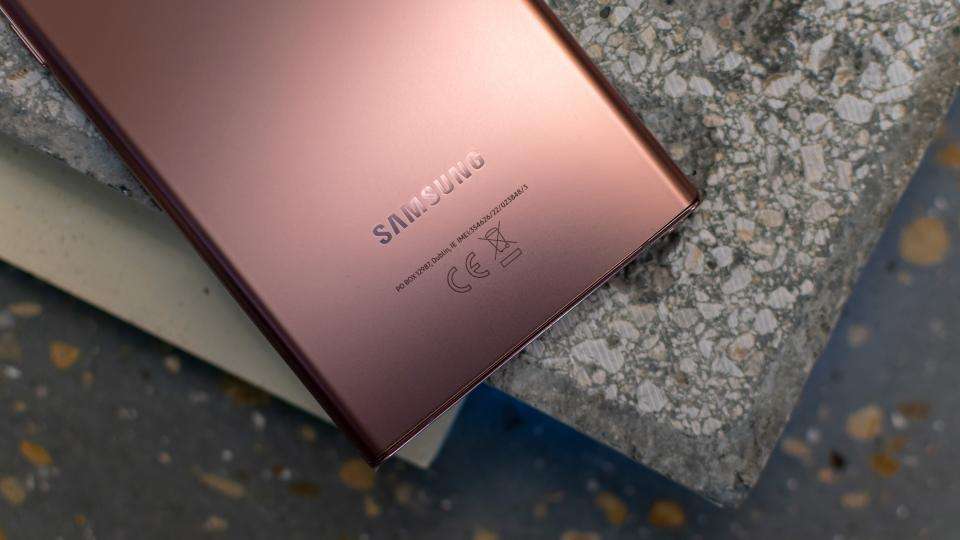The term “phablet” might not be used much in tech circles any more, but Samsung’s work-friendly Galaxy Notes are still the first handsets that spring to mind when you think of big-screened smartphones. Despite outlasting the designation once used to define it, the Note is back once again, and this time around Samsung isn’t resting on its laurels when it comes to upgrades.
READ NEXT: The best smartphones
Continuing the two-phone tradition it started last year, there are two models of Note 20 to mull over in 2020. The Galaxy Note 20 Ultra is primed to steal the limelight this year, since it’s where you’ll find all the extra bells and whistles. Just be prepared to spend the most you’ve ever had to spend on a (non-folding) Samsung phone to date. Don’t say I didn’t warn you.
Preorder now from Samsung
Samsung Galaxy Note 20 Ultra review: Key specifications, price and release date
6.9in, 120Hz WQHD+ (3,088 x 1,440), Dynamic AMOLED screen (494ppi)
Octa-core 2.73GHz Samsung Exynos 990 processor
12GB of RAM
256GB or 512GB of storage (microSD expansion up to 1TB)
5G as standard
Quad rear camera: 108MP (f/1.8), 12MP (f/3.0) 5x telephoto, 12MP (f/2.2) ultra-wide
“Space Zoom” (hybrid zoom up to 50x)
Selfie camera: 10MP (f/2.2)
4,500mAh battery
IP68-rated waterproofing
165 x 77 x 8.1 mm
208g
Mystic Black, Mystic Bronze, Mystic White
UK release date: Preorder from 5 August, available from 11 August
UK price: From £1,179
Samsung Galaxy Note 20 Ultra review: Design, key features and first impressions
Considering how much Samsung wants you to pay for one, the Galaxy Note 20 Ultra represents the very pinnacle of Samsung’s Android achievements thus far. No stone has been left unturned, it seems, with Samsung throwing in a handful of high-end upgrades that were initially introduced in the Galaxy S-series of phones earlier in the year.

To start with, not only does the Note 20 Ultra benefit from the largest-ever screen on a Note handset – measuring 6.9in from corner to corner – but it’s also the first Note with a buttery-smooth 120Hz refresh rate. The caveat, however, is that you can’t enable the 120Hz setting at the phone’s native screen resolution of 3,088 x 1,440. Instead, like the Galaxy S20, you have to dip the resolution down to FHD+ in the phone’s display settings. The regular Note 20 , which costs £330 less, doesn’t have this problem, of course, since it only uses a simple 60Hz panel.
The screen itself is a Dynamic AMOLED jobby that supports HDR10+ content and, according to Samsung, it has a 25% higher peak brightness than last year’s Galaxy Note 10 . It has curved sides (the normal Note 20 has a flat screen) and it absolutely dominates the first impression, with just a simple hole-punch notch for the 10-megapixel selfie camera in the top-centre portion of the display. It also has some of the skinniest bezels I’ve ever seen on a handset.
Preorder now from Samsung
Despite its large size, the Note 20 Ultra never felt particularly unwieldy during my socially-distanced hands-on session at Samsung’s KX store in London. It’s a massive phone, no question, but I never had to worry about dropping it. There are three colour choices to chew over this year: ‘Mystic Black’, ‘Mystic White’ and my personal favourite, ‘Mystic Bronze’ which you can see in the images dotted about this review.

Naturally, the S Pen returns, although its built-in slot has switched sides and is now in the bottom-left corner of the phone instead. There are a few minor upgrades this year, most notably when it comes to writing precision – the Note 20’s S Pen has a speedy 9ms latency, which is a 40% improvement over last year’s model. There are five new waggle-like gestures this year too, including a feature which allows you to shake the S Pen to take a screenshot, and then directly annotate it if you wish.
If like me, you have wonky handwriting, then the phone’s note-taking software is now able to straighten your words and you can also attach voice recordings to your notes, allowing you to read and listen at the same time. Other work-friendly improvements include a PC-like folder and sub-folder structure, deeper Windows integration, auto-saves to the cloud and wireless DeX (Samsung’s “Desktop Experience”, first introduced with the Galaxy S8 ) functionality with any TV or monitor that supports screen-mirroring.

As for play, both Note 20 phones will be the first to support Microsoft’s Project xCloud game-streaming service. So long as you have an active Xbox Game Pass Ultimate subscription (both phones come with a three-month pass), then you will be able to stream and play over 100 Xbox games when the service launches in September. You will have to pair a compatible Bluetooth controller in order to play these games, however.
Preorder now from Samsung
The Note 20 Ultra is powered by Samsung’s latest in-house flagship chipset, the Exynos 990, or Qualcomm’s Snapdragon 865 Plus equivalent if you happen to live in the US. This speedy processor is clocked at 2.73GHz, and proved to be a very capable performer in our Galaxy S20 benchmarking tests earlier in the year. In the case of the Galaxy Note 20 Ultra, there’s a healthy 12GB of RAM for multitasking, as well as either 256GB or 512GB of internal storage.
While the vanilla Note 20 doesn’t have expandable storage, the Ultra model has a microSD slot which can take cards up to 1TB in capacity. It also has a larger battery, at 4,500mAh, with support for 45W charging speeds – although Samsung didn’t confirm whether a 45W charger will be included in the box. Regardless, Samsung did say that the Note 20 Ultra can charge up to 50% from empty in just 30 minutes, if you happen to have a 45W plug.
The differences between the two Note 20 models don’t end there. The Ultra’s camera offering is slightly different, most notably when it comes to ‘Space Zoom’. Both phones have a triple-camera array at the rear, but the regular Note 20’s telephoto unit can only hybrid zoom up to 30x, while the more expensive Note 20 Ultra is capable of zooming up to 50x.
In a practical sense, this discrepancy is hardly worth buying the more expensive phone for, in my opinion, but where the Note 20 Ultra should beat its Note 20 stablemate is with its massive 108-megapixel main camera unit – which works with the aforementioned 12-megapixel zoom sensor and a 12-megapixel ultra-wide snapper.

Like the Galaxy S20, the Note 20 Ultra can capture video at up to 8K resolution, although you will have to drop the resolution down to 4K if you want to record at 60fps. Samsung has also updated the camera software and you can now enable an on-screen histogram, as well as audio level indicators. The zoom slider has also been improved, and you can now tinker with multi-source mic controls, if you decide to pair the phone with a Bluetooth mic – like the new Galaxy Buds Live.
Samsung Galaxy Note 20 Ultra review: Early verdict
Did I mention that there was absolutely no mention of Bixby at my hands-on event? Samsung’s naff digital assistant was notably absent from the official presentation, and I also spotted that the dedicated Bixby button on the side of the phone seems to have quietly been removed, too.
I asked a Samsung product spokesperson at the event whether Bixby would make an appearance, and I wasn’t told whether it would or not. Make of that what you will, but in my mind, Bixby has taken an involuntary redundancy from Samsung’s repertoire of services, and those rumours about the Google Assistant integration might actually be true.
In a more general sense, however, the Note 20 Ultra is the culmination of Samsung’s bi-annual flagship launches, and it’s pretty much everything you could ask of a modern flagship. There’s no doubt in my mind that it will be a rapid performer, but it will likely also take great pictures, and its software experience will be as equally refined as the Galaxy S20’s too.
But there is one major sticking point, and that’s the high launch price. Starting at £1,179, the Note 20 Ultra is leg-shakingly expensive, and I can’t imagine many of these will be flying off the (virtual) shop shelves when it shows up on 11 August.
Preorder now from Samsung
Samsung is helping to sweeten the deal by throwing in a free pair of Galaxy Buds Live headphones if you preorder, and there's the free three months of Xbox Game Pass Ultimate, too. You can also get up to £100 off when trading in an "eligible smartphone" when you preorder through Samsung's website, but it's still hard to justify spending extra on the top-end model.
Still, the Note 20 Ultra might not need a handout, and it could very well stand up on its own as the Android smartphone to beat in 2020. I’ll be receiving a review unit shortly, so keep your eyes peeled for my full verdict in the coming weeks.
|
Samsung Galaxy Note 20 Ultra specifications |
|
Processor |
Octa-core Samsung Exynos 990 (2x2.73GHz, 2x2.5GHz, 4x2GHz) |
|
RAM |
12GB |
|
Screen size |
6.9in |
|
Screen resolution |
3,088 x 1,440 |
|
Pixel density |
494ppi |
|
Screen type |
Dynamic AMOLED |
|
Front camera |
10MP (f/2.2) |
|
Rear camera |
108MP (f/1.8), 12MP (f/3.0) zoom, 12MP (f/2.2) wide |
|
Flash |
LED |
|
Dust and water resistance |
IP68 |
|
3.5mm headphone jack |
No |
|
Wireless charging |
Yes |
|
USB connection type |
USB-C |
|
Storage options |
256GB; 512GB |
|
Memory card slot (supplied) |
microSD (1TB) |
|
Wi-Fi |
802.11ax |
|
Bluetooth |
5 |
|
NFC |
Yes |
|
Cellular data |
5G, 4G |
|
Dual SIM |
Yes (shared with microSD) |
|
Dimensions (WDH) |
165 x 77 x 8.1mm |
|
Weight |
208g |
|
Operating system |
Android 10 (One UI 2.5) |
|
Battery size |
4,500mAh |
